Death trap Khumbu Icefall
The very first climbers had respect for the Khumbu Icefall. This is underlined by the nicknames which the members of the successful British Everest expedition 1953 gave to the risky passages through the labyrinth of ice: “Hillary’s Horror”, “Mike’s Horror”, “Atom Bomb area”. The icefall was “the key to all attempts on the south side of Everest”, wrote Sir Edmund Hillary, the New Zealander, who, together with Sherpa Tenzing Norgay, stood first on the 8850-meter-high summit. Since then about 40 climbers, most of them Sherpas, were killed in the Khumbu Icefall by avalanches from the west shoulder or collapsing seracs. In recent years, high temperatures have even increased the danger of avalanches. For this reason, the New Zealand expedition organizer Russell Brice had abandoned his expedition in 2012.
No hope for missing climbers
The disaster on Friday was the worst in the history of Mount Everest. By now 13 dead bodies have been recovered from the ice and snow. There was no more hope to find the three still missing climbers alive, said a spokesman of the Ministry of Tourism. All victims are Nepalis, most belonged to the ethnic group of Sherpas. They all were carrying material and food from basecamp to the camp above the icefall, when they were hit by the ice avalanche. They had no chance to escape.
![]() read more
read more
At least twelve killed in avalanche on Everest
The spring season on Everest begins with a disaster. On the Nepalese south side of the mountain, an avalanche has hit the Khumbu Icefall. “Around 25 persons were swept away by the avalanche”, a spokesman of the Nepalese Ministry of Tourism said. “We have rescued eight alive, and 12 bodies have been recovered so far.” Four Sherpas were still missing. Climbers from six expeditions were caught in the avalanche. Due to other reports, all victims were Sherpas who were fixing the route route through the labyrinth of ice when the avalanche went off at an altitude of about 5800 meters.
The dangerous passage is called “popcorn field” because there are so many ice blocks of collapsed seracs or out of ice avalanches. This spring, some 300 climbers from 28 expeditions have pitched their tents on the south side of Mount Everest.
By now it is the worst avalanche disaster in the history of Mount Everest. In 1922, on the Tibetan north side of Mount Everest seven Sherpas were killed in an avalanche. In 1970 within days seven Sherpas lost their lives in the Khumbu Icefall.
Ralf Dujmovits: Mount Everest, take six!
How could the Portuguese explorer Fernando Magellan see so many campfires at the southern tip of South America in 1520 that he named the region “Tierra del Fuego”? Actually, the typical constant rain there should have extinguished any flame. During their expedition to Monte Sarmiento in Tierra del Fuego Gerlinde Kaltenbrunner, Ralf Dujmovits, Ralf Gantzhorn and Rainer Pircher had only two half days without rain. Furthermore wind speeds up to 150 kilometers per hour at a height of 1800 meters. Thus the plan failed to climb the main summit of the 2246-meter-high, pyramid-shaped mountain via the North Face. In addition to bad weather the team had bad luck. A snow cave at 1600 meters, where the climbers had deposited their gear during their first attempt, had disappeared, when they climbed up for the second time.
![]() read more
read more
Goettler is going to climb Mount Everest
That was a short home leave. Just one month after his return from Nanga Parbat David Goettler has packed his bags again. His goal this spring: Mount Everest. “To climb Everest via the normal route without supplemental oxygen is challenging enough. That would be interesting”, David had told me last August when I had asked him whether the highest mountain in the world was an attractive goal for him. Now the 35-year-old climber is putting this project into action. He wants to climb Everest via the normal route on the Nepalese south side of the mountain, David writes me while trekking from Lukla to Namche Bazaar. “Without bottled oxygen and high porters.” I want to know whether he is a member of a team. “I and 600 others … ;-)”, replies Goettler. “As a team, I have only myself !”
![]() read more
read more
Blind climber Andy Holzer will try to climb Everest
“I have decided to make a big journey with my friends.” With these simple words Andy Holzer has announced his so far most spectacular project. The blind climber wants to get upon the roof of the world, the summit of Mount Everest. On 2 April the 47-year-old Austrian will start with his friends Andreas Unterkreuter, Wolfgang Klocker and Daniel Kopp to Nepal, in order to climb the highest mountain on earth. “My motivation is simply that I want to use an opportunity in life”, Andy writes on his homepage. “Never before I was, and due to the quickly passing years probably never after I will be in such a physical, mental and logistical constitution to be able to reach this secret dream of every true mountaineer.” In short: Now or never!
![]() read more
read more
The tedious topic of ladder
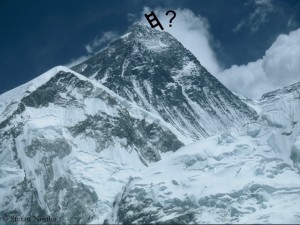 A news does not necessarily become more true by repeating it again and again. There are reports in many German newspapers that ladders should be fixed at the Hillary Step, the key point of the normal route on the Nepalese side of Mount Everest, to prevent traffic jams. This has been producing headlines like “Nepal makes climbing Everest easier”. Let us look at the facts: Mohan Krishna Sapkota, spokesman of the Ministry of Tourism in Kathmandu, has told a journalist of a news agency that there were considerations to fix ladders at the Hillary Step. He didn’t say when it should happen. All this is not new.
A news does not necessarily become more true by repeating it again and again. There are reports in many German newspapers that ladders should be fixed at the Hillary Step, the key point of the normal route on the Nepalese side of Mount Everest, to prevent traffic jams. This has been producing headlines like “Nepal makes climbing Everest easier”. Let us look at the facts: Mohan Krishna Sapkota, spokesman of the Ministry of Tourism in Kathmandu, has told a journalist of a news agency that there were considerations to fix ladders at the Hillary Step. He didn’t say when it should happen. All this is not new.
![]() read more
read more
Garbage collection on Everest
When, finally, will a piggy bank be placed in the editorial offices, into which everyone has to pay five Euros, who calls Mount Everest the “highest garbage dump in the world”? The money could then be donated to environmental projects in Nepal. These days, the phrase again was often used in the German press. And hardly anyone made the effort to look at this more closely. What has happened? There is a new rule to remove garbage from Everest, no more and no less.
![]() read more
read more
Motorised glider over Everest
Science and adventure are often not far apart. With a motorised glider and a 3-D camera on board scientists of the German Aerospace Center (DLR) and pilots of the “Mountain Wave Project” have explored Mount Everest a week ago. “The conditions were ideal, despite the wind speeds at the summit of Everest, which neared 100 kilometres per hour,” said pilot Klaus Ohlmann. “The almost turbulence-free slope updrafts helped us ascend quickly.” Ohlmann and his co-pilot Jona Keimer started in Pokhara in the Annapurna region and needed one and a half hour to reach the highest mountain in the world. With the images of the special camera a precise 3-D model of the region around Mount Everest will be produced, in which, according to DLR, even small objects of only 15 centimeters size are visible. The model shall be useful for disaster protection and rescue operations. The video of the DLR awakens wanderlust. Check it out for yourself:
Less expeditions, less money
Nepal sees his mountain luck run out. “The government must frame policies to gain a competitive edge”, a report by the Ministry of Culture, Tourism and Civil Aviation said which was quoted in the “Himalayan Times”. The neighbouring countries had started aggressive campaigns to attract more climbers. India had offered a discount of 50 per cent on climbing fees, Pakistan had waived off royalties for all peaks below 6500 meters, the report said. Nepal is charging fees for mountains which are much lower, e.g. for 5500-meter-high Chhukung Ri, a popular trekking peak in the Khumbu region.
![]() read more
read more
Dujmovits returns to Mount Everest
Two weeks have passed since Ralf Dujmovits has decided to abandon his winter expedition on Nanga Parbat due to the strong risk of icefall. Two weeks to reflect on his experiences in Pakistan and also to look ahead. I call the 52-year-old German climber at home, in the town of Buehl at the foot of the Black Forest.
Ralf, what does German winter feel like, compared with winter in Pakistan, in particular on Nanga Parbat?
I stood at Frankfurt airport and then at the stations in Mannheim and Karlsruhe wearing a short-sleeved shirt, all around me people wrapped up in winter clothes. I had to get used again to the warm temperatures. We have a very warm winter in Germany, a real contrast to what we had in Pakistan. Whatever, I feel that I`m arriving also mentally and I am enjoying the warmth again.
![]() read more
read more
Destivelle: “Crazy what’s happening on Everest”
She looks younger than she really is (53 years) and her eyes twinkle when she is talking about climbing. 20 years ago Catherine Destivelle of France was a star of the climbing scene: Inter alia she soloed the classical north faces of Eiger, Matterhorn and Grand Jorasses, all of them in winter. She free-climbed the more than 6000-meter-high Nameless Tower in the Karakoram. (If you want to get an impression of her style of climbing, watch the amazing video below!) After the birth of her son Victor in 1997 she scaled down her climbing activities. I talked to Catherine on a hike during the International Mountain Summit (IMS) in Brixen in South Tyrol.
Catherine, are you still climbing?
Yes, less, but I’m still climbing. I like it. When I have time or holiday, I do it several times a week.
When you did your great climbs, in the 1980s and beginning of the 90s, you were a pioneer of women climbing. What has changed since then?
I think it’s a normal evolution. Women climbers of today are better than in our times, because they are training since their youth. Climbing has become a real sport. In my day it just had started to be a sport, but wasn’t really.
![]() read more
read more
No decision yet on “new” 8000ers
Nepal has to be patient for about one more year. At its general assembly in Pontresina in Switzerland the International Mountaineering and Climbing Federation (UIAA) has not yet decided whether it will recognize additional 8000-meter-peaks or not. According to the Nepal Mountaineering Association a UIAA commission had named six side peaks that could be accepted as prominent peaks with a unique identification: Kanchenjunga West-Peak (alias Yalung Kang, 8505 m), Central-Peak (8473 m) and South-Peak (8476 m), Lhotse Central-Peak (8410 m) and Shar (8382 m), Broad Peak Central (8011 m). “Both Nepal and China Mountaineering Association delegates welcome and fully support the UIAA initiation”, Nepalese Ang Tshering Sherpa, Honorary member of UIAA, wrote to me after his return from Switzerland. “Also Pakistan Alpine Club and Indian Mountaineering Foundation delegates were very positive but need more time to get approval from their association’s annual general meeting which will be held end of Dec 2013 or January 2014.”
![]() read more
read more
Goettler: Relations with Sherpas will remain well
Many are familiar with the view of Makalu, without being aware of it. On pictures taken from the summit of Mount Everest in direction of the Southeast Ridge you see in the background the shapely fifth highest mountain on earth. Just a few kilometres linear distance are lying between the two 8000ers, but actually they are worlds apart. This spring the headlines concerning Everest were overturning: first the brawl in Camp 2, then the 60-year-anniversary of the first ascent. Because of this I lost sight of an expedition of four German and a Swiss climber to Makalu.
Siegrist left expedition
David Göttler, Michael Waerthl, Hans Mitterer, Daniel Bartsch and Stephan Siegrist wanted to climb the mountain in Alpine style via the challenging west pillar. Siegrist had to cancel the expedition because he got severe headaches and vision disorders, possibly due to a skull fracture that he had a few years earlier. The other four abandoned their original plan and ascended via the normal route. Waerthl returned because of icy fingers about 200 metres below the summit. The other three climbers reached the highest point at 8485 metres.
![]() read more
read more
Barrier-free Everest
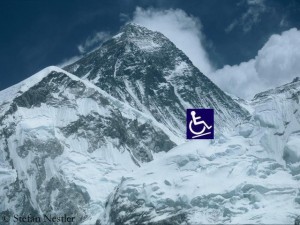 A permit for a video interview broadcasted live from the summit of Mount Everest via smartphone costs about $ 2000. We know that since this spring, when the Briton Daniel Hughes did it this way answering questions of the BBC– without permission, as it turned out later. The Nepalese Tourism Ministry was not amused. Hughes could be banned from obtaining climbing permits for ten years or banned from entering the country for five years. But I’m sure that meanwhile both parties have come to an amicable agreement on a special Everest smartphone tariff. How fortunate that I call my old friend Chomolungma from only 50 metres above sea level. Quite legally, only the NSA is listening too. It takes me three attempts to be successful:
A permit for a video interview broadcasted live from the summit of Mount Everest via smartphone costs about $ 2000. We know that since this spring, when the Briton Daniel Hughes did it this way answering questions of the BBC– without permission, as it turned out later. The Nepalese Tourism Ministry was not amused. Hughes could be banned from obtaining climbing permits for ten years or banned from entering the country for five years. But I’m sure that meanwhile both parties have come to an amicable agreement on a special Everest smartphone tariff. How fortunate that I call my old friend Chomolungma from only 50 metres above sea level. Quite legally, only the NSA is listening too. It takes me three attempts to be successful:
Namasté, Chomo! Stefan is calling! Where the hell have you been?
Also Namasté! I was taking a snow shower. Wonderful, this monsoon!
Did you really need a shower after this spring season?
Joker, are you living behind the moon?
![]() read more
read more
Bonington: The pioneers have gone elsewhere
When Everest was climbed first in 1953 Chris Bonington was a young English mountaineer of 17 years. Later he did historic climbs like the first ascents of Annapurna II in 1960, of the Central Pillar of Freney on the south side of Mont Blanc in 1961 and of the 7285-meter-high Ogre in the Karakoram together with Doug Scott in 1977 (the second ascent followed only in 2001). But Bonington also proved to be a great expedition leader. In 1970 he led the successful expedition to the South Face of Annapurna, in 1975 the expedition to Mount Everest, during which Doug Scott and Dougal Haston climbed the Southwest Face first. Bonington himself reached the summit of Everest in 1985 as a member of a Norwegian expedition. He was knighted by the Queen in 1996 for his services to the sport. I met the 78-year-old climber last week at the diamond jubilee celebration of the first ascent of Mount Everest in the Royal Geographical Society in London and asked him – of course – about his thoughts on Everest.
Sir Chris Bonington, 60 years after the first ascent of Mount Everest, how do you feel about these pioneers?
I’m a great believer in the heritage of our sport, looking back, enjoying and learning from what our predecessors have done. In a way that first ascent of the highest point on earth is one of the very, very great occasions. I think it’s story. How they succeeded and worked together, it was a superb team effort. It’s something very special.
![]() read more
read more





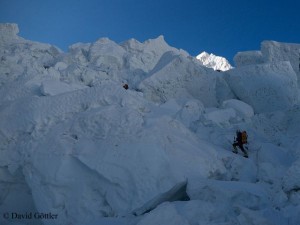

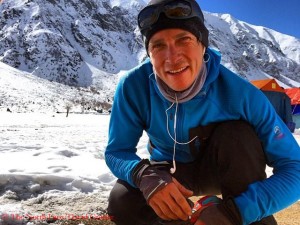
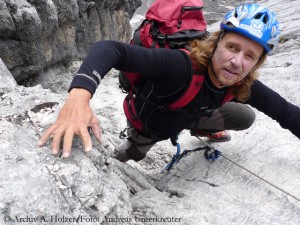
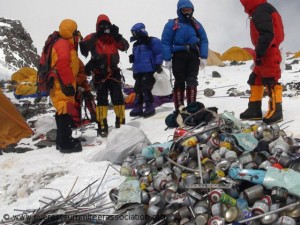
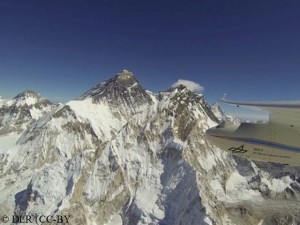

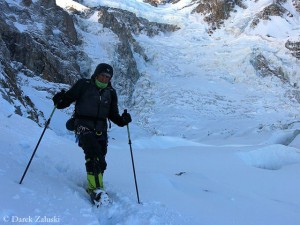
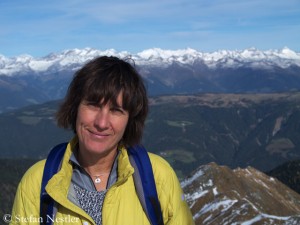
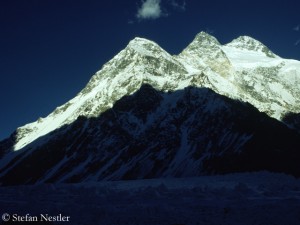

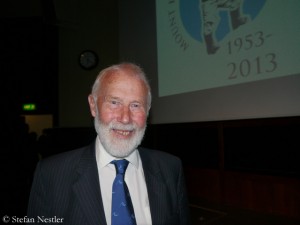





Feedback